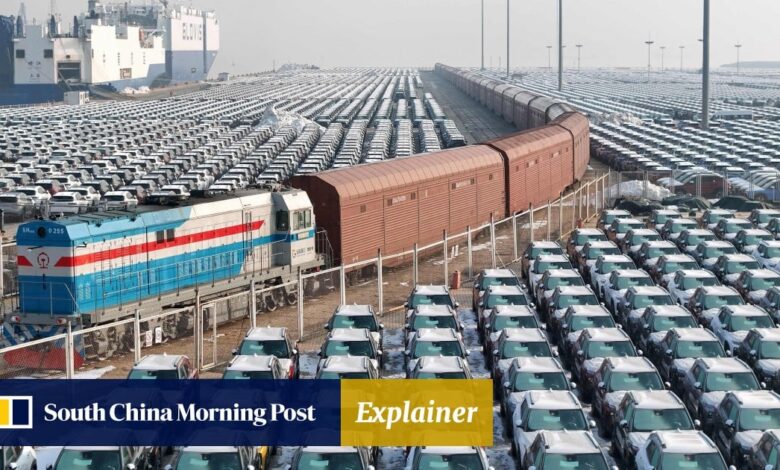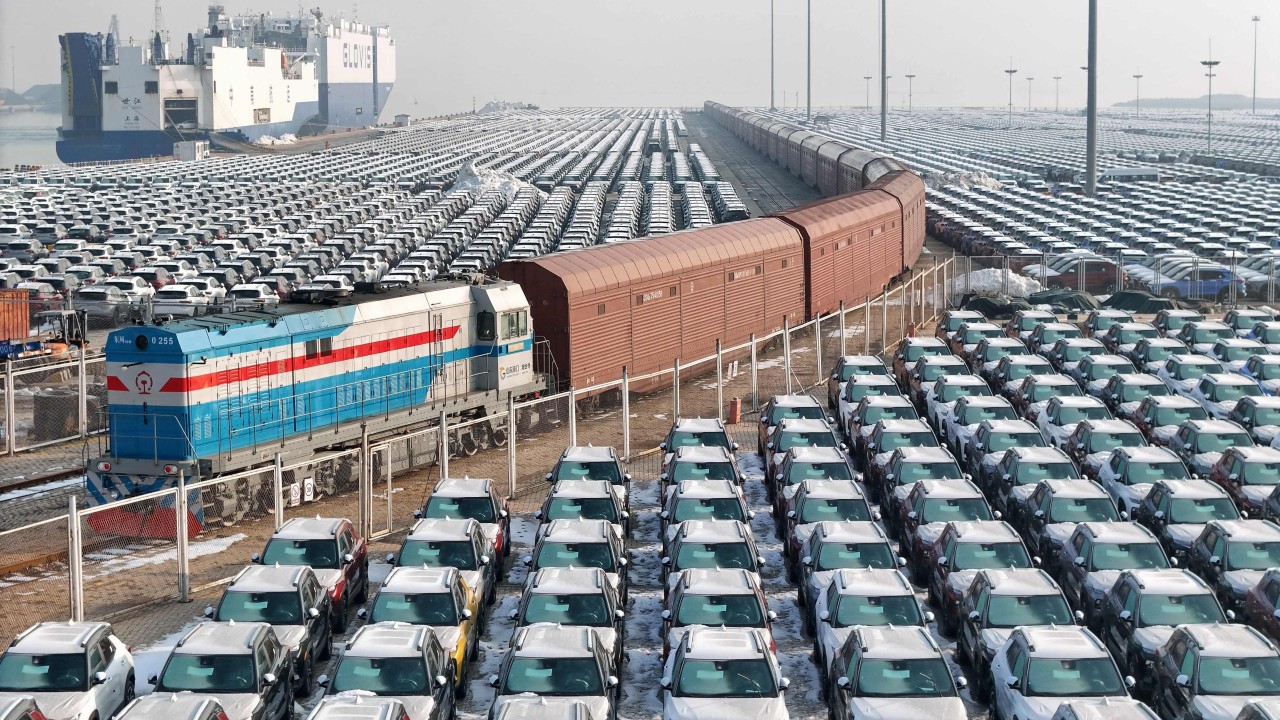China’s exports surge, but sustainability questioned: 5 takeaways from June’s trade data


“After accounting for changes in export prices and for seasonality, we estimate that export volumes edged up, reaching record highs,” said Zichun Huang, China economist at Capital Economics, adding that export values grew at their fastest year-on-year pace in 15 months.
Analysts at Nomura said the rise in export growth in June was partly due to a low base, and was broad-based across most of China’s major trading partners.
In the first half of 2024, China’s exports also rose by 3.6 per cent year on year.
“While the growth level does not appear too high at first glance, this has been stronger than most market participants were expecting at the start of the year,” said Lynn Song, chief economist for Greater China at ING.
2. Slowing domestic demand hits imports
China’s imports fell by 2.3 per cent from a year earlier, compared to the 1.8 per cent growth seen in May, with analysts pointing to softer domestic demand.
“But we expect this to occur soon, boosting the import-intensive construction sector.”
The “surprising drop” in import growth pointed to weak domestic demand, said analysts at Nomura.
In the first half of the year, China’s imports grew by 2 per cent.
“The surprise fall in imports for June signals that China’s domestic demand may be losing some momentum and may need to find renewed strength,” said analysts at HSBC.
3. Asean trade remains strong
China’s exports to the Association of Southeast Asian Nations (Asean) rose by 15 per cent in June compared to a year earlier.
The Asean bloc “continued to see strong growth”, said Song at ING.
Shipments to the United States, meanwhile, increased by 6.6 per cent, representing a second straight month of positive growth.
Elsewhere, exports to Russia grew by 3.4 per cent year on year in June, while shipments to the EU rose by 4 per cent.
4. Trade surplus hits record high
China’s June trade surplus rose to a record high of US$99.05 billion in June, compared with US$82.6 billion in May.
“The large trade surplus can provide some boost for growth figures, but with domestic demand facing ongoing headwinds, more policy support is needed,” said analysts at HSBC.
China’s trade surplus in the first half of the year stood at US$434.9 billion, according to Song at ING.
5. Exports to remain robust, but tariffs question looms
Huang at Capital Economics said he expects exports would remain robust in the near term despite increased Western tariffs.
“Tariffs from the US and EU won’t significantly impact overall exports in the short-run. They only target a small portion of Chinese exports. And their effect can be dampened through trade re-routing and exchange rate adjustments,” he said.
“Overall, we expect exports to remain a near-term tailwind to economic growth.”
The sustainability of strong exports is a major risk for China’s economy in the second half of the year
But Zhang Zhiwei, president and chief economist at Pinpoint Asset Management, cautioned that “trade conflicts are getting worse”.
“Export growth continued to rise, while imports contracted year-on-year. This reflects the economic condition in China, with weak domestic demand and strong production capacity relying on exports,” he said.
“The sustainability of strong exports is a major risk for China’s economy in the second half of the year. The economy in the US is weakening.”
And despite import volumes having dropped back in June, Huang at Capital Economics said they will probably rebound as the recent reacceleration in government bond issuance should translate into increased infrastructure spending, lifting demand for industrial commodities.
Source link



